How to Build a Wood Floor Countertop
I got lots of questions about my Office wood floor countertop after I posted said that I built it out of Oak Flooring. So, I created some sketches to try to give you a better idea of how you can make all your dreams come true…if you’re wondering how to build counters out of hardwood flooring!

How to Build a Wood Floor Countertop
*I’m purposely not giving you any surface dimensions because you have to build the countertop to fit your work space.
My work space happened to be T-shaped, you could do the same thing with a straight countertop, or L or X or + shaped for that matter!
1. Create a plywood base
- Cut a plywood base the shape of your countertop but subtract the thickness of your finish material from the desired final width. (I used 3/4″ flooring for my countertops so I made my plywood base 3/4″ narrower!) Why? Because you are going to put a “face” on your countertop to make it look thicker, which will add to the total width.
- Use two layers of plywood to create a strong base. If you have seams, stagger your second layer so you’re seams do not end up in the same place. Screw both layers together to secure the seams.
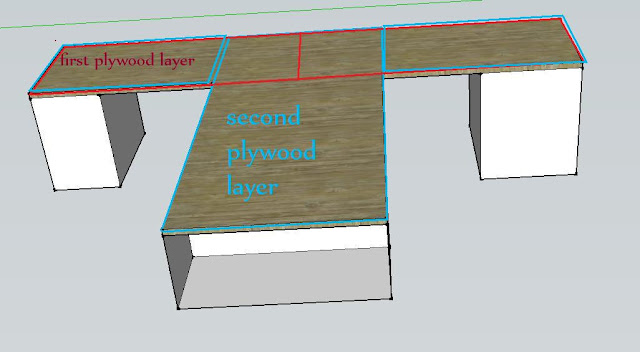
- If the ends of your countertop are going to be exposed, do the same “adjustment” for the length. (My countertop goes wall to wall so the ends don’t matter)
2. Attach Hardwood
I used unfinished 3/4″ Oak wood floor material because it was cheaper than buying regular 3/4″ Oak from the lumber store. Plus, the tongue and groove helped secure each row together without using glue and clamps which I would have done had I used regular wood.
I started on the front and worked my way back. In order for the countertop to appear to be 1 1/2″ thick, I added a 1 1/2″ front edge that was joined with a bevel.
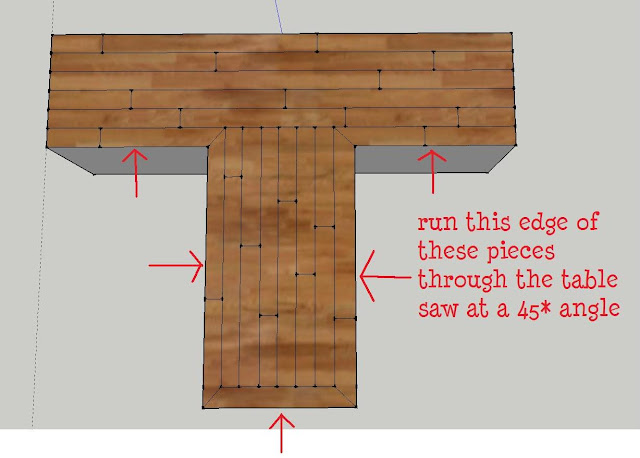
Bevel the first row of wood planks
- Rip enough of your wood floor planks at 45* angles on a table saw. You’ll need enough planks for the whole first row plus a front edge.

- The front edge pieces will need to be ripped to 1 1/2″ wide planks. (My wood was wide enough to get 2 strips out of each plank so I mitered both sides before I cut it to width)
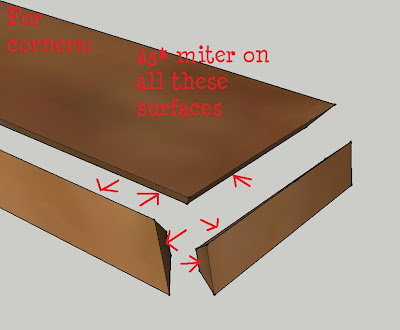
Miter front edge corner pieces
- The corner pieces had to be mitered at 45* angles for the corners as well as the top bevel. I used my miter saw for the end cuts.
Nail wood floor onto MDF countertop base
- I just nailed right through the top since it was unfinished wood. Wood putty in all the nail holes, cracks and corners. The whole thing had to have a good sanding anyway.
- (Make sure you use the proper length nail! I didn’t calculate for that and had to go back after I was finished and pound UP a few nails from the bottom. Don’t want to snag your knees…!)
- Finish! I used (ebony tinted) Tung oil (which I LOVE but make sure you use a RESPIRATOR and the proper gloves if you go that route.)

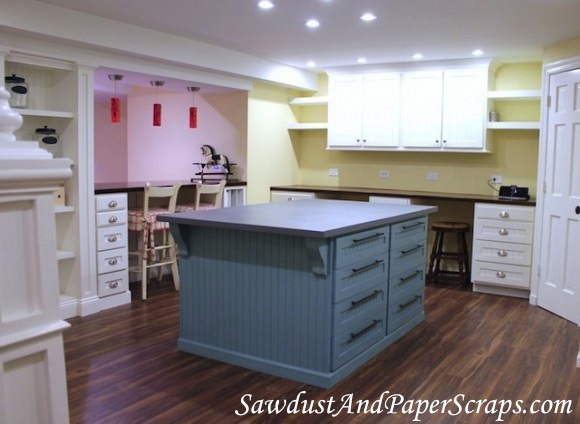


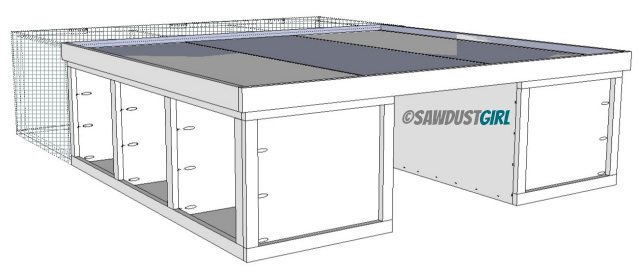
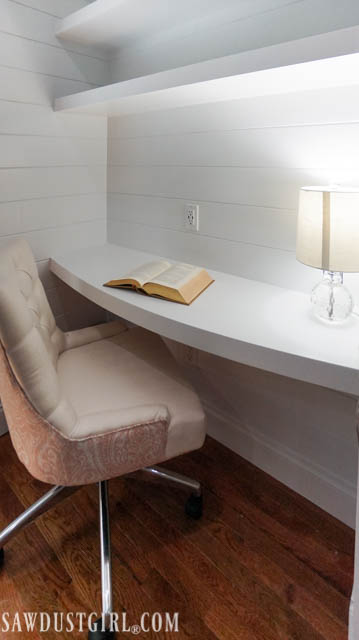
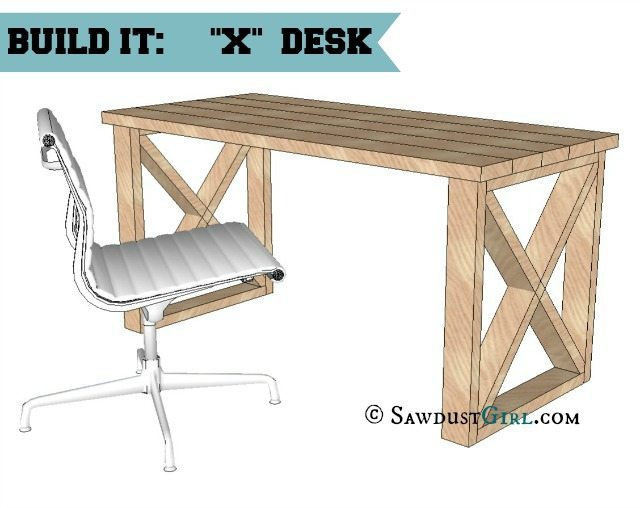

What is “stair nose”?
Hey,
I came across this when looking for advice on building a base for a countertop made from wood flooring. Glad to see how well it turned out and that I wasn’t the only one to attempt this 🙂
I just wanted to add that we purchased “stair nose” with the rest of the wood and are using it for the edges of the counter that are exposed. It’s designed to give a nice finished edge and is much easier than having to create joints for that finished look.
Thanks for your input Dimitri. My goal in this tutorial is not to teach people how to use a table saw. If they have one and know how to use it, they can rip at 45. If not, I mentioned some alternatives to the mitered edge. It is just showing hoe I made my countertop because I got asked so many times.
Hey there. I don’t mean to be the only one with a negative comment but, I have to point out that expansion and contraction are big problems when using flooring for countertops. On your countertops, the problem will show up right at the bottom of the T. Specifically where the miter is. You can’t glue or nail a long grain board perpendicular to the grain of the countertop- it will slowly break itself apart. No amount of sealer or finish or paint can stop this movement and if it hasn’t happened yet, it eventually will. I’m only posting this to help out. As a carpenter, I see a lot of DIYers with broken hearts. Let me know if I posted this in error.
PS Ripping long miters on a table saw is not an an operation that can be safely performed without proper training. At the very least, tell your readers to research which side of the blade the fence should be on when mitering.
That is good to know! Here is a great article by Fine Woodworking on food safe finish options.
http://www.finewoodworking.com/SkillsAndTechniques/SkillsAndTechniquesArticle.aspx?id=26893
There are a lot. Hope you find one that works out great for you. You can email me some pics at [email protected]. I can’t wait to see your masterpiece!